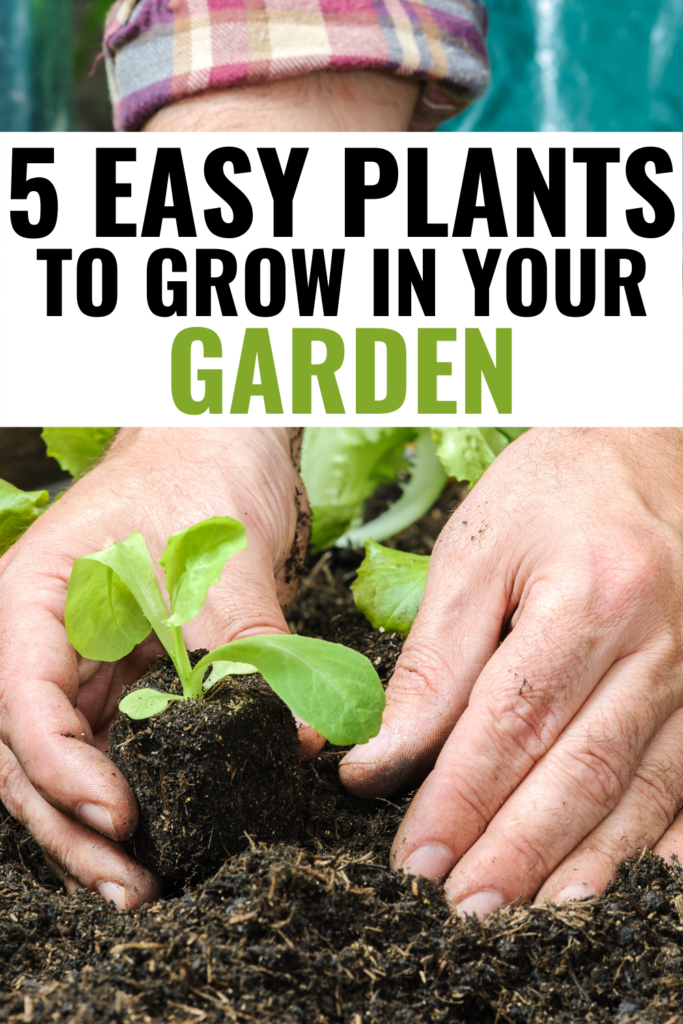There was a time when nearly everyone cultivated a vegetable garden, but busy lifestyles, urbanization, and a lack of expertise have separated us from our gardening roots. The good news is that whether you are inexperienced, short on time, or just looking for a fun family project, there is a world of choice when it comes to easy veggies to grow in your backyard.

“Easy” means different things to different people, but the vegetables on this list have four things in common:
- Simple water, soil, light, and weeding needs
- Great yields
- Resistant to pests
- Suitable for short growing seasons
With that in mind, here are five foolproof veggie varieties.

Easy veggies to grow
Beans
The common bean (Phaseolus vulgaris), also known as the string, snap, or French bean, is a versatile and easily cultivated plant. It grows as either a “bush bean,” which looks like a small shrub, or a “pole bean,” which is a climber and can be grown on a trellis. Both produce an abundance of long, edible pods that come in a rainbow of colors: yellow, green, black, purple, and even spotted. Kids love the dark purple variety, which turns green when cooked.
This plant’s tender pods are delicious raw, but they can also be steamed, stir-fried, baked, or even pickled. Beans are a great source of dietary fiber, vitamins A, B, and C, antioxidants, and essential minerals. Beans are also rich in folates, which, when taken before and during pregnancy, can prevent neural tube defects. Lastly, beans freeze very well, so you can enjoy the fruits of your labor year-round.
Cucumbers
The cucumber is a classic garden vegetable. Its cool, crunchy texture and mild taste make it natural for salads, snacks, or even soups. Cucumbers are members of the melon family and grow on vines that either creeps along the ground or are trained to a trellis – a space-saving alternative. There are several varieties available, including minis, pickling, slicing, and burpless.
Cucumbers are very low in calories, rich in potassium and antioxidants, and an excellent source of vitamin K, which may play a role in increasing bone mass and limiting the damage of Alzheimer’s disease. The peels are a good source of fiber.

Tomatoes
Giant, plum, red, yellow, orange, green, cherry, beefsteak, grape, heirloom – there is a tomato for every need and every palate. Tomatoes can be grown from seed relatively easily, but if you want to take a gardening shortcut, consider buying young plants from a garden center and then transplanting them to your garden or a pot. Even if your yard is the size of a postage stamp, you will have room for tomatoes.
Tomatoes are not only delicious – they are one of the healthiest foods around. They are rich in lycopene and carotenoids, which protect the body from free radicals and full of cancer-preventing antioxidants (e.g., alpha and beta-carotenes, xanthin, and lutein).
Zucchini
The zucchini is a type of summer squash that looks somewhat like a cucumber. Like the cucumber, it grows on a low, creeping vine that likes to spread out. The first time people plant zucchini, they often find themselves surprised by the resulting bounty. If you plant zucchini, be prepared to share.
Zucchini is an incredibly versatile vegetable. Not only can you enjoy it as a fresh snack or in a salad, but it is also great grilled, stir-fried, broiled, or baked. It can even be included in muffins, cakes, and bread, which are great ways to sneak more vegetables into your (or your family’s) diet. It is a low-calorie source of vitamin C, and the skin is a great source of fiber.
Lettuce
There is nothing quite like a fresh summer salad, and lettuce is ideal for the beginning or hurried gardener. Available in leaf and head varieties, lettuce is another vegetable that you can easily grow in a small space or a container. If reseeded every couple of weeks, it will produce for the entire growing season.
Lettuces vary widely in texture and flavor, so it is worthwhile to experiment. Some, like the bitter Chinese lettuce, are excellent in stir-fries and stews. All varieties are packed with carotenoids, vitamin K, folates, vitamins C and B, and minerals. Just 100g of lettuce provides 247% of your daily vitamin A needs!
If you have a small patch of soil and half an hour of spare time each week, you can have a garden. There is no reason to pay grocery store prices for these common vegetables when, for the price of a pack of seeds, you can enjoy a bounty from these easy veggies to grow in your own backyard. Don’t be afraid to get growing!
These tips for growing peppers, tips to grow healthier strawberries, and tips for growing watermelon may be helpful to you as well.